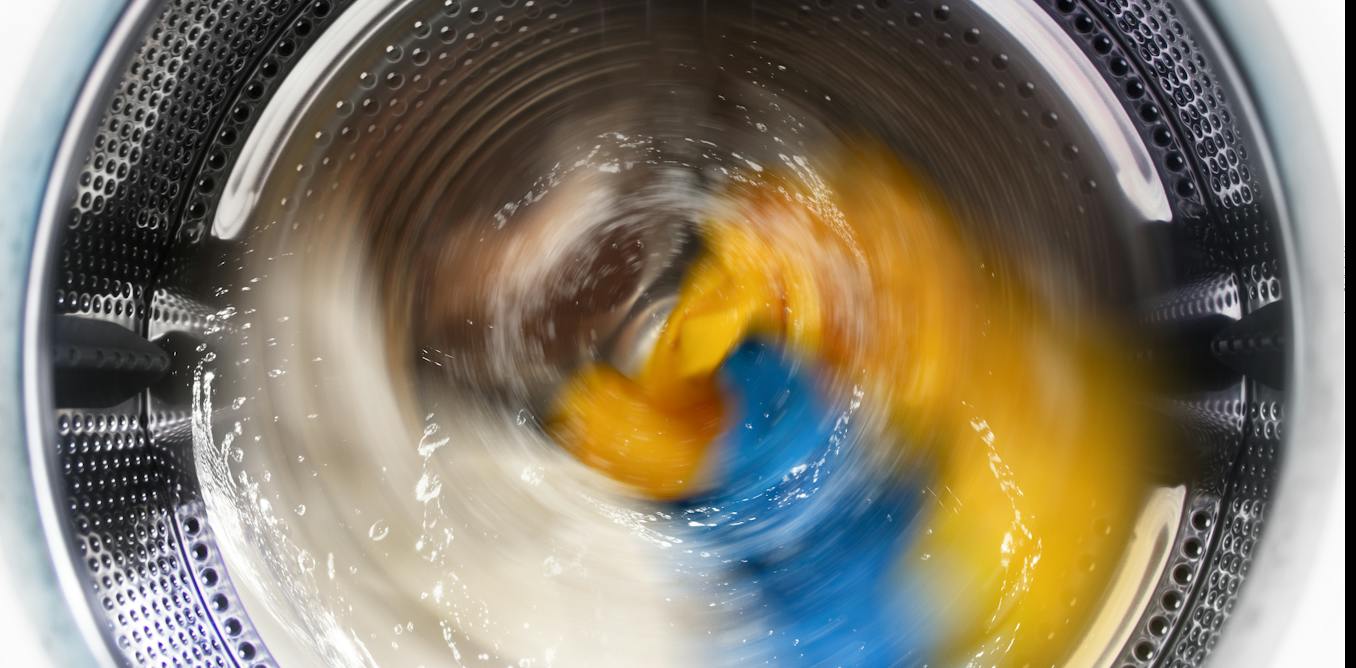The most common microplastics in the environment are microfibers—plastic fragments shaped like tiny threads or filaments. Microfibers come from many sources, including cigarette butts, fishing nets and ropes, but the biggest source is synthetic fabrics, which constantly shed them.
Textiles shed microfibers while they are manufactured, worn and disposed of, but especially when they are washed. A single wash load can release several million microfibers. Many factors affect how many fibers are released, including fabric type, mechanical action, detergents, temperature and the duration of the wash cycle.



Over the last 10 or so years I eliminated all plastic fibres from my warderobe almost entirely. Problem almost solved. Industry and politics: too little, too late. Again.
I tried to read the article, but it was a struggle - I skimmed bits. But, I’m pretty sure it never suggested reducing the amount of plastic in your clothes as an option.
Because reducing the amount you buy is not an option, per capitalism.
An example from the debate around climate change: Plan cities that don’t require driving? Bad. Replace cars we already own with EVs? Good.
Reducing the amount you buy doesn’t reduce the particles shed during wearing and washing.
But of course buying less overall, and as much second hand as possible, is always the better option not just for clothes. And some skills in mending your clothes so you don’t have to throw them away just because of a broken zipper or a ripped seam.
Best investment: a sewing machine.
Cotton, wool, linen, silk, hemp, bamboo, etc…
Even Rayon/Viscose is “decent”, as it’s a pulp and paper product.
Downside is that it is much, much easier to find near-100% natural products as a guy than as a girl. A lot of clothing for women come only in synthetic fibres, and the struggle for my wife is very, very real.
And even as a guy, you have to be aware of mixes. Many fabrics may be up to 95% of one thing (cotton, etc.), but then have a half-dozen synthetic additives (for additional physical attributes, like stretchiness) that then contribute to those microfibres that don’t easily break down.
Even as a hard Atheist, I frequently (and jokingly) turn down clothing due to the fact that it violates Leviticus 19:19.
As a fellow atheist, I love your bible argument! 😂
I can imagine it’s more difficult for women, but as a man I haven’t really looked into that. And as an old man dressing more on the “formal” side it might be easier to find clothes, than younger “athleisure” people.
The hilarious bit is when I see salespeople wearing visibly obvious Christian symbols (a cross on a necklace, for example) who get either visibly confused at my reference, like they have no clue of that passage or what it says, or get visibly offended that I am (ostensibly) living my life biblically, like a good Christian should.
I was even once asked why I was not wearing a cross. Enraged the dude by telling him that all iconography and symbols - like a cross - is nothing more than a golden calf.
True question: bamboo, rayon, viscose, tencel, etc… are “natural” product artificially polymerized. Aren’t these similar to plastics in the sense of a polymerized chain?
Does it degrades faster than “traditional” plastics? I’ll have to look into that.
And I otherwise completely agree with you. I’m now only buying if cotton/linen/wool. However hard to find clothes made 100% with these. :(
Most of my artificial fibre clothes are for exercise, what did you do around that? I value the sweat wicking, quick drying properties.
Thanks in advance for your help!
Try linen (even comes in jersey knit!)
where do you find lighter linen clothing? everything ive worn thats linen has been the thick, canvasy type
I buy from a German second hand online shop which has a decent selection most of the time. But you often have to be patient if you want something specific. It’s not like “I need xyz tomorrow, let’s buy something”, but more “It’s January, but will be hot again in summer. Let’s see if there’s a nice shirt and summer suit on offer within the next 20 weeks”
Yeah, I will not give up my knitted elasto-poly-whatever shirts, I need them to survive on the production floor. Cotton would kill me lol
What materials did you replace them with?
Linen and wool whenever possible. Or cotton, which has some issues (needs a lot of water to grow, gets damp very easily - sweat and rain! - and takes a long time to dry)
Same, everything I have is either cotton or wool.
It was partially for sustainability, and partially because plastic clothes feel horrible, irritate my skin, and suck at wicking moisture.